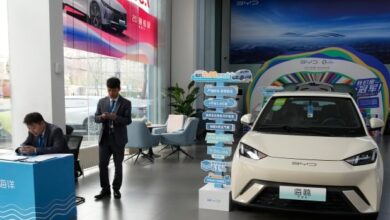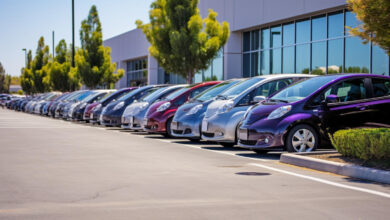Using an electric vehicle will make driving cheaper for everyone | Commentaries

I seriously doubt that Ron Fink has ever had an honest discussion with an electric vehicle (EV) owner (“Who will pay?” April 25). I am an EV owner and would like to respond to his claims with facts.
Ron claims that EVs catch fire spontaneously or after a crash, that the electric grid will be overloaded by EV chargers, and the public will pay for those EV chargers. He says that EVs are not selling because travelers don’t want to scramble to find chargers and wait “two to six hours” while they recharge. Finally, he claims that the move to EVs will harm the economy of our nation!
Top Gear and Motor Trend both state that EVs catch fire less than 1/50 as often as gasoline-powered (ICE—internal combustion engine) cars. Another data point is that insurance companies do not charge more for fire insurance if there is an EV in the garage. While EV fires are harder to put out, they happen so infrequently that EVs are actually safer than ICE cars. In a crash, EVs have fuses that disconnect power. Virtually all sources report that of all car engine types, hybrids are the ones most likely to catch fire.
Ron claims that EVs will overload the electric grid. The slow adoption of EVs gives utility companies time to plan. They know exactly who is using power and when. It has always been their job (not ours) to provide the power we need. A lot of people charge their EVs in their garage using automatically timed chargers that can be set to charge at off-peak times. If a person commutes 40 miles a day to work, charging their car at home will take 10 kilowatt hours and cost them about $3 per day, (rate plan dependent)—and is even cheaper if they have solar panels. And they never have to stop at a gas station. Their car is “full” every morning.
He claims that chargers are hard to find. I live in Arroyo Grande. There are 94 chargers at six locations within 15 miles of my house. Chargers are conveniently located along most freeways, and my car locates them automatically on the navigation screen. I have never had to wait to get a charge, and I would have no qualms about driving my EV to Florida, New York, or Iowa.
It does not take “two to six hours” to charge an EV! After driving for three hours, I can charge mine on the road in about 20 minutes—about the time it takes to stretch my legs, take a short walk to a Starbucks, and go to the bathroom.
The public doesn’t have to pay for chargers. They are privately owned, just like gas stations. The display in an EV tells its owner exactly how much energy it receives at charging stations, providing a double-check on what drivers are paying for.
EVs have virtually no maintenance. My Tesla 3 weighs 20 pounds less than my BMW 335, which will be replaced by another EV soon.
The 2035 California mandate for electric vehicles does not mean that owners will be forced to get rid of their ICE vehicles. Only new cars and light trucks are affected. Large trucks are not included, and you will still be able to buy ICE vehicles in other states and bring them into California.
But many may not want to buy an ICE. EV prices are becoming comparable to ICE cars, even without rebates or incentives, and they are almost certain to become cheaper. The cost to drive an EV is currently around half as much as an ICE car. Technology is improving over time, and charging times are reducing while range is increasing.
EVs are starting to offer “reverse charging” where the EV battery will power your house during outages. Most utilities will even buy—at premium rates—excess vehicle battery power in order to support the grid during peak usage times.
And EVs help the environment. There is a strong market in used EV batteries, and they can be recycled. Considering production, use, and disposal, EVs generate much less pollution during their lifetimes than ICE vehicles.
I believe the biggest hindrance to more EV sales is misinformation spread by uninformed individuals and petroleum companies, consortiums of gas station owners and car mechanics. EVs are practical, comfortable, powerful, easier to maintain, and not that expensive to buy. They are certainly less expensive to operate.
Rather than hurt the economy, EVs can make driving cheaper for everyone, and they can help save the environment at the same time. m
Charles Linquist wrote to the Sun from Arroyo Grande. Chime into the EV conversation by emailing your opinion to [email protected].



